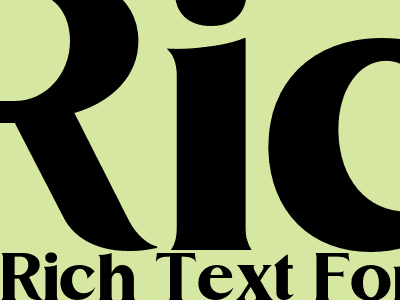Unlock the Power of Rich Text Formatting for SEO Success
Introduction
In the competitive landscape of digital marketing, optimizing your content for search engines is paramount to drive organic traffic and establish online visibility. Rich Text Format (RTF) plays a crucial role in this endeavor, offering a wealth of formatting options that enhance the readability, user experience, and SEO performance of your blog posts. This comprehensive guide will delve into the world of RTF, exploring its benefits, best practices, and how it can empower your SEO strategy.
Benefits of Rich Text Formatting for SEO
Improved Readability
RTF enables you to structure your content using headings, subheadings, bullet points, and lists, making it easier for readers to skim and digest key information. This enhanced readability signals to search engines that your content is well-organized and user-friendly, which can positively impact your search rankings.
Enhanced User Experience
RTF allows you to add visual elements such as images, videos, and tables to your posts, breaking up the monotony of text and creating a more engaging experience for users. This enriched content helps keep readers on your page longer, reducing bounce rates and improving dwell time, both of which are factors considered by search engines when determining relevance.
Increased Keyword Targeting
RTF provides the ability to emphasize specific keywords within your content using bold, italic, or underline formatting. By strategically placing keywords in headings, subheadings, and other prominent areas, you can increase their visibility to both users and search engines, boosting your chances of ranking for relevant search queries.
Best Practices for Rich Text Formatting
Use Headings and Subheadings Wisely
Headings (H1, H2, H3, etc.) are essential for structuring your content and providing a clear hierarchy of information. Use H1 for the main title of your post and subsequent headings for major sections and subsections. This helps search engines understand the organization of your content and improves its accessibility for users.
Incorporate Bullet Points and Lists
Bullet points and lists make your content easier to read and skimmable. Use them to present key points, benefits, or steps in a clear and concise manner. This formatting helps users quickly identify the most important information and enhances the overall readability of your post.
Add Images and Videos
Visual content enriches your posts and makes them more visually appealing to users. Include relevant images and videos to illustrate your points, break up the text, and keep readers engaged. Be sure to optimize your images for the web by using descriptive file names and alt tags, which help search engines understand the content of your images and improve your image search rankings.
Use Bold and Italic Sparingly
While bold and italic formatting can emphasize important keywords or phrases, use them sparingly to avoid distracting readers or making your content appear cluttered. Reserve these formatting options for highlighting key points or drawing attention to specific pieces of information.
Conclusion
Embracing Rich Text Format in your blog posts can significantly enhance your SEO performance. By improving readability, user experience, and keyword targeting, RTF empowers you to create content that ranks higher in search engine results pages, attracts more organic traffic, and establishes your website as a credible and authoritative source of information. By following the best practices outlined in this guide, you can unlock the full potential of RTF and elevate your SEO strategy to new heights.

Komentar